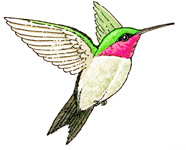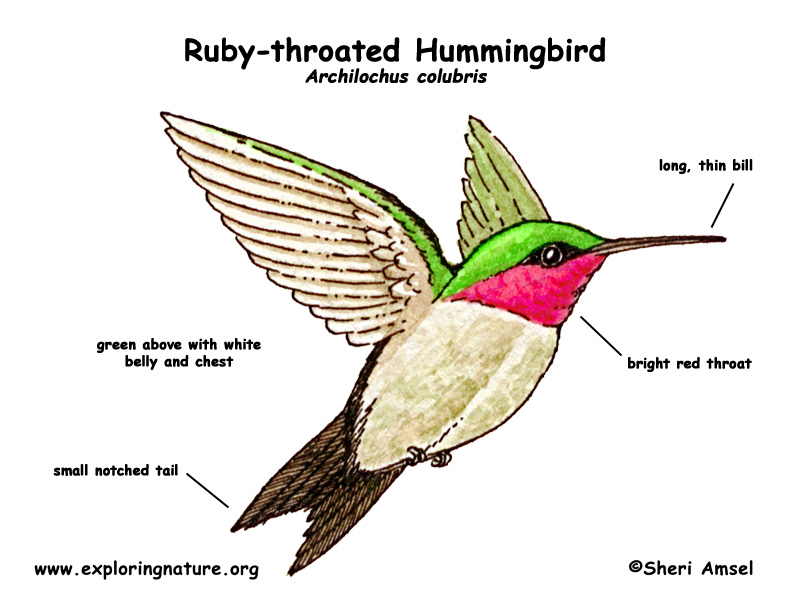

They spend the winter in southern Mexico and Central America. In summer, they breed in from central Canada south through the eastern half of the U.S.
They live in woods, deciduous forests, orchards and gardens. In the winter, they also live in tropical forests.
They are tiny birds with a metallic green head and back, a pale chest and belly and a bright, red throat. They have a long, slender bill for nectar collecting. Females are duller colored with a white throat.
They hover near tubular flowers collecting nectar.
They eat mostly nectar, but also small insects and drink from feeders.
They make an open-cup nest of plant matter, spider webs and lichens, perched on a small tree branch. The female lays 1-3, tiny white eggs.
Kingdom: Animalia
Phylum: Chordata
Subphylum: Vertebrata
Class: Aves
Order: Apodiformes
Family: Trochilidae
Genus: Archilochus
Species: A. colubris
When you research information you must cite the reference. Citing for websites is different from citing from books, magazines and periodicals. The style of citing shown here is from the MLA Style Citations (Modern Language Association).
When citing a WEBSITE the general format is as follows.
Author Last Name, First Name(s). "Title: Subtitle of Part of Web Page, if appropriate." Title: Subtitle: Section of Page if appropriate. Sponsoring/Publishing Agency, If Given. Additional significant descriptive information. Date of Electronic Publication or other Date, such as Last Updated. Day Month Year of access < URL >.
Amsel, Sheri. "Hummingbird (Ruby-throated)" Exploring Nature Educational Resource ©2005-2024. December 14, 2024
< http://www.exploringnature.org/db/view/171 >

